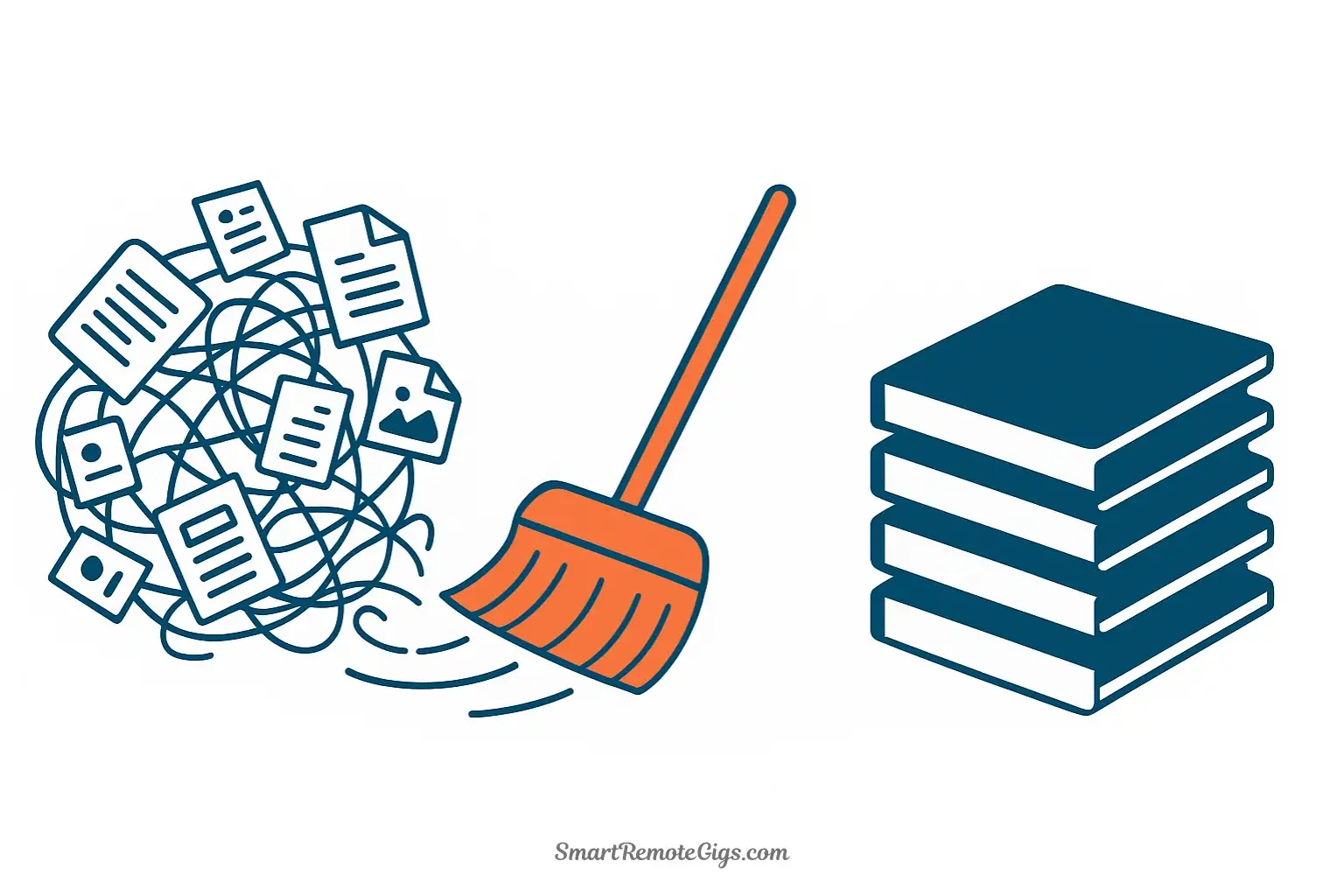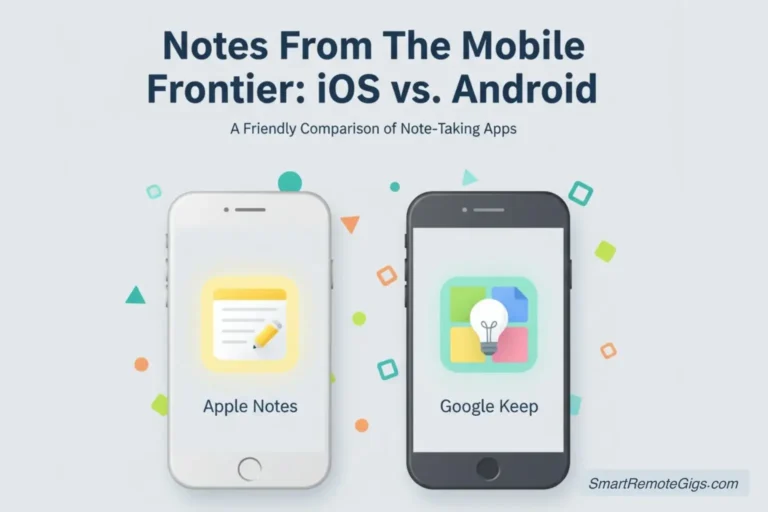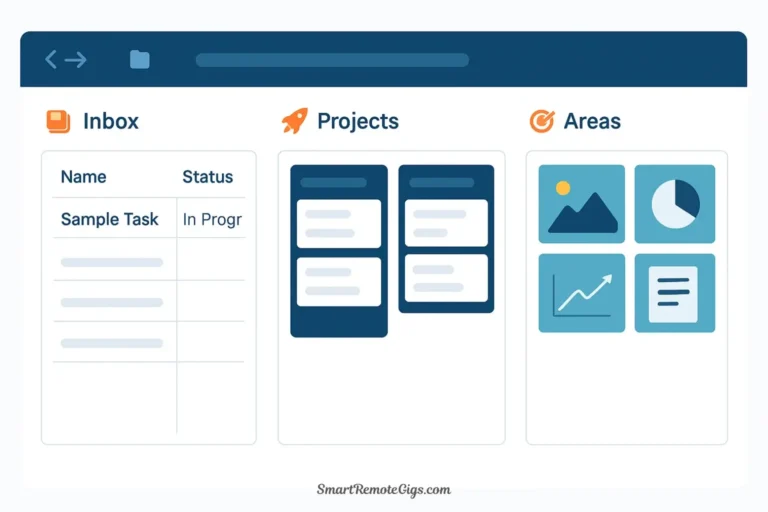You started with such good intentions. You read about building a Second Brain, set up your folders, maybe even bought a subscription to a fancy note-taking app. You began capturing everything: articles, ideas, meeting notes, random thoughts at 2am.
Fast forward three months. Your system is chaos. You have 200 unprocessed items in your inbox. Your Projects folder contains abandoned initiatives from 2022. You can’t remember what half your tags mean. When you need to find something, you don’t even bother looking—Google is faster than searching your own notes.
The thing that was supposed to make you more organized has become another source of stress. You’re experiencing what productivity expert Tiago Forte calls the “Collector’s Fallacy”—the illusion that gathering information is the same as learning or doing something useful with it.
Here’s the truth: A messy Second Brain is completely normal. It’s not a sign you failed. It’s a sign you’re human. Every knowledge worker who’s built a personal system has been here. The difference between people who give up and people who succeed isn’t perfection—it’s having a reset plan.
This guide gives you exactly that: a simple, 5-step reset process that takes 2-3 hours total and gets you back on track without starting from scratch. No nuclear option. No “delete everything and start over.” Just a practical triage plan that works.
Let’s fix this.
The 5-Step Second Brain Reset Plan
Think of this as spring cleaning for your digital brain. You’re not reorganizing everything perfectly—you’re creating enough clarity to start using your system again. Perfect is the enemy of done.
Your Reset Roadmap:
┌─────────────────────────────────────────────────────────┐
│ 🧹 THE 5-STEP RESET PLAN │
├─────────────────────────────────────────────────────────┤
│ Step 1: Declare Inbox Bankruptcy (5 minutes) │
│ → Archive all unprocessed items │
│ │
│ Step 2: Perform a P.A.R.A. Audit (30-45 minutes) │
│ → Review Projects, Areas, Resources │
│ │
│ Step 3: Simplify Your Tagging System (15-20 minutes) │
│ → Delete most tags, keep 10-15 max │
│ │
│ Step 4: Schedule Weekly Review (5 minutes to set up) │
│ → Block 30 minutes every week │
│ │
│ Step 5: Shift to Expressing (Ongoing mindset) │
│ → Stop capturing, start creating │
│ │
│ Total Reset Time: ~2-3 hours │
└─────────────────────────────────────────────────────────┘Step 1: Declare Inbox Bankruptcy
Time required: 5 minutes
The problem: You have 50, 100, maybe 200+ unprocessed items in your inbox. Every time you open your system, that number creates anxiety. You’ll “process it later,” but later never comes.
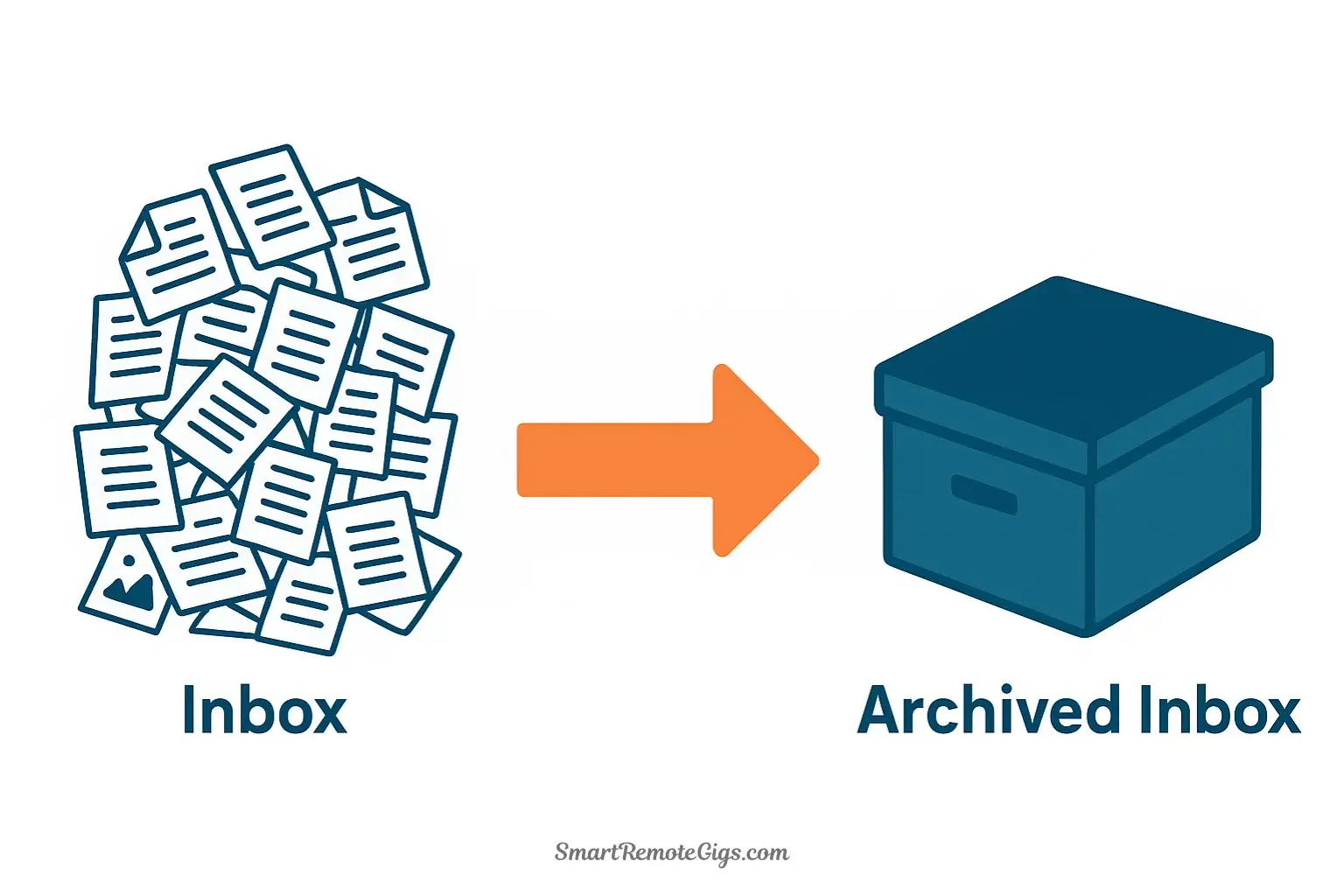
The solution: Inbox bankruptcy.
Here’s what to do:
- Create a new folder called Archive – Unprocessed Inbox [Today’s Date]
- Select everything in your inbox
- Move it all to this archive folder
- Close that folder and pretend it doesn’t exist
What just happened: You gave yourself a clean slate without losing anything. That mountain of guilt? Gone. If you desperately need something from that archive later, you can search for it. But realistically, if you haven’t looked at it in three months, you won’t miss it.
The psychology: Inbox bankruptcy acknowledges reality. You weren’t going to process those 200 items. You were going to feel bad about not processing them, then stop using your system entirely. Better to archive them cleanly and move forward.
Start fresh today: From this moment, you have zero unprocessed items. Everything new that comes in gets processed quickly, because the backlog no longer exists.
Step 2: Perform a P.A.R.A. Audit
Time required: 30-45 minutes
The problem: Your P.A.R.A. structure has drifted. Projects you completed six months ago are still in your Projects folder. Areas you no longer care about clutter your view. You’re maintaining a system that doesn’t reflect your actual life.
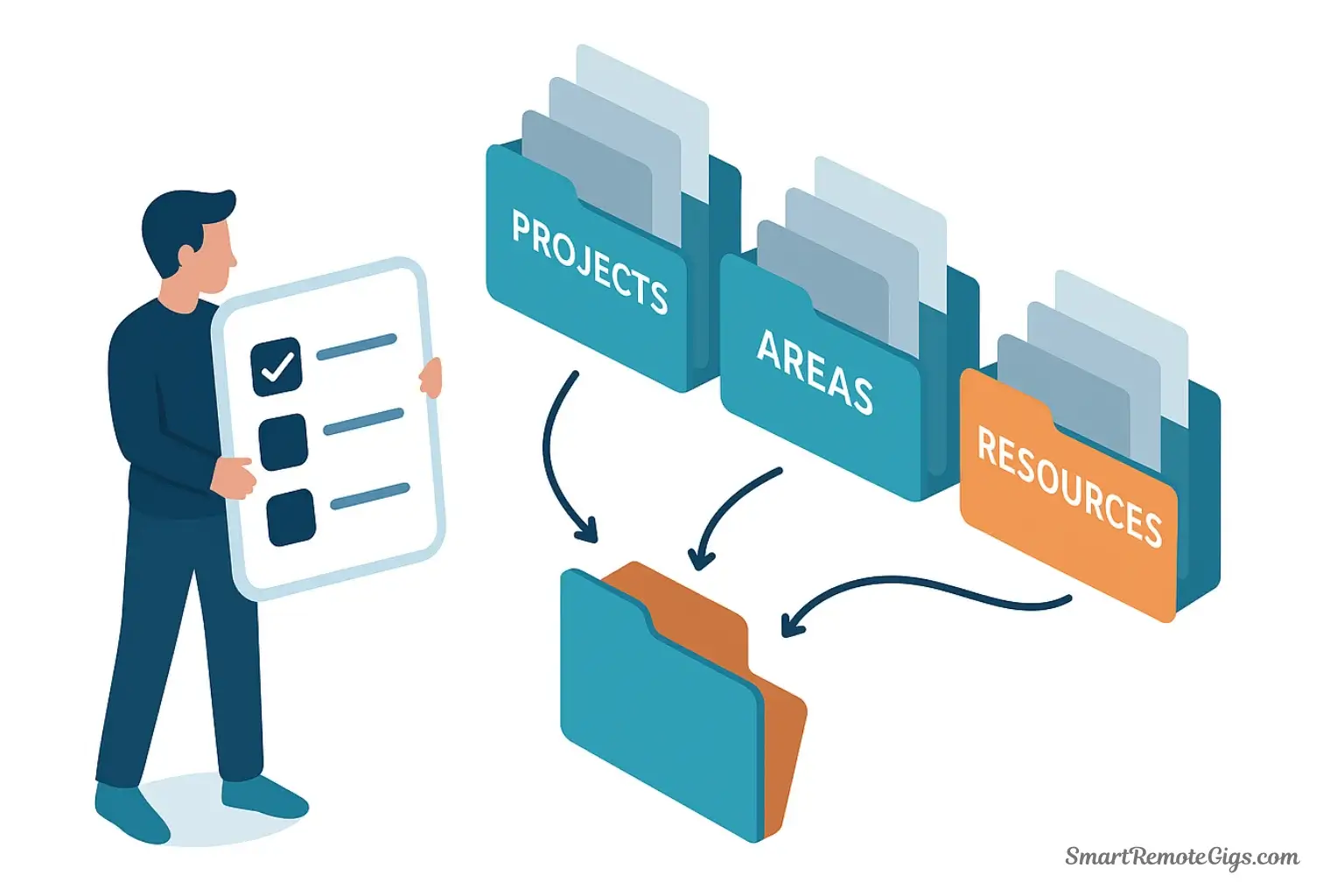
The solution: A ruthless P.A.R.A. audit.
Projects Audit (15 minutes):
Open your Projects folder. For each project, ask:
- ✅ Is this still active? (Am I currently working on it?)
- ✅ Is this still relevant? (Does this goal still matter?)
- ✅ Will I complete this in the next 3 months? (If not, it’s not a project)
Decision tree:
- Active and relevant? → Keep in Projects
- Completed? → Move to Archives → Completed Projects [Year]
- Cancelled or no longer relevant? → Move to Archives
- Uncertain but might revive someday? → Move to Archives (you can pull it back if needed)
Reality check: If you have more than 10-15 active projects, you don’t have 15 projects—you have 15 wishes. Pick the 5-7 you’re actually working on. Archive the rest.
Areas Audit (10 minutes):
Open your Areas folder. For each area, ask:
- ✅ Is this still an ongoing responsibility in my life? (Job role, life role, or commitment I maintain?)
- ✅ Have I updated this in the last 3 months? (If not, is it really an active area?)
Decision tree:
- Active and maintained? → Keep in Areas
- No longer relevant? → Move to Archives (e.g., “Previous Job Responsibilities”)
- Dormant but might return? → Move to Archives
Areas are roles you currently wear. If you changed jobs, moved houses, or stopped a commitment, those areas should be archived.
Resources Audit (15 minutes):
Open your Resources folder. This is where most bloat lives. For each resource topic, ask:
- ✅ Have I referenced this in the last 6 months?
- ✅ Am I still interested in this topic?
- ✅ Could I find this information again with a quick Google search if needed?
Decision tree:
- Referenced recently or still learning? → Keep in Resources
- Haven’t touched in 6+ months? → Move to Archives
- Generic information easily re-findable? → Delete it
The 80/20 insight: You probably reference 20% of your Resources 80% of the time. Keep that 20%. Archive the other 80%.
After the audit: Your Projects folder shows only current work. Your Areas reflect your actual life. Your Resources are topics you actively engage with. Everything else is safely archived, searchable if needed, but out of sight.
Step 3: Simplify Your Tagging System
Time required: 15-20 minutes
The problem: You have 50+ tags. Half of them are used once. You have both #productivity and #productivity-tips and #productivity-systems. You’re not sure what goes where. Tags became noise instead of signal.
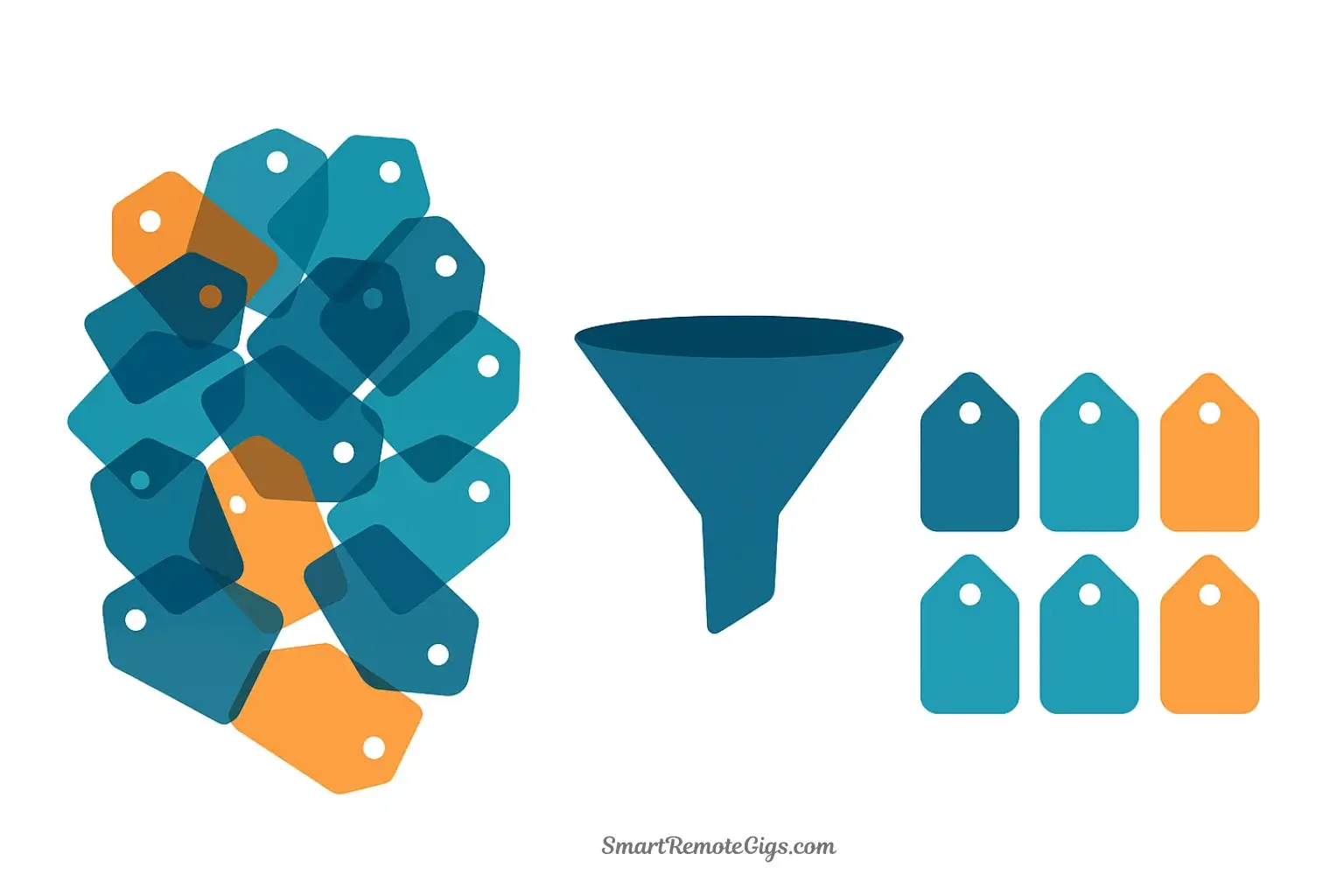
The solution: Tag bankruptcy and simplification.
Here’s what to do:
- Export or screenshot your current tag list (just in case)
- Delete all tags except the 5-10 you’ve actually used consistently
- Start fresh with a maximum of 10-15 broad category tags
Recommended starter tag set:
- #work and #personal (context)
- #ideas (for your original insights)
- #reference (for saved information)
- #to-review (for items needing attention)
- 5-7 topic tags for your actual interests (e.g., #marketing, #health, #finance, #design)
Tag philosophy going forward:
- Broad, not narrow: Use #marketing not #content-marketing and #email-marketing and #social-media-marketing
- If you create a tag, use it 3+ times immediately: Tags that only appear once are useless
- Tags are supplementary, not primary: Your P.A.R.A. folders do most organizational work; tags are just a bonus filter
The relief: Your tag list went from overwhelming to manageable. You can actually remember what your tags mean.
Step 4: Schedule and Commit to a 30-Minute Weekly Review
Time required: 5 minutes to schedule (30 minutes weekly ongoing)
The problem: Your system got messy because you never maintained it. You captured constantly but never organized, reviewed, or cleaned up. Chaos compounded.
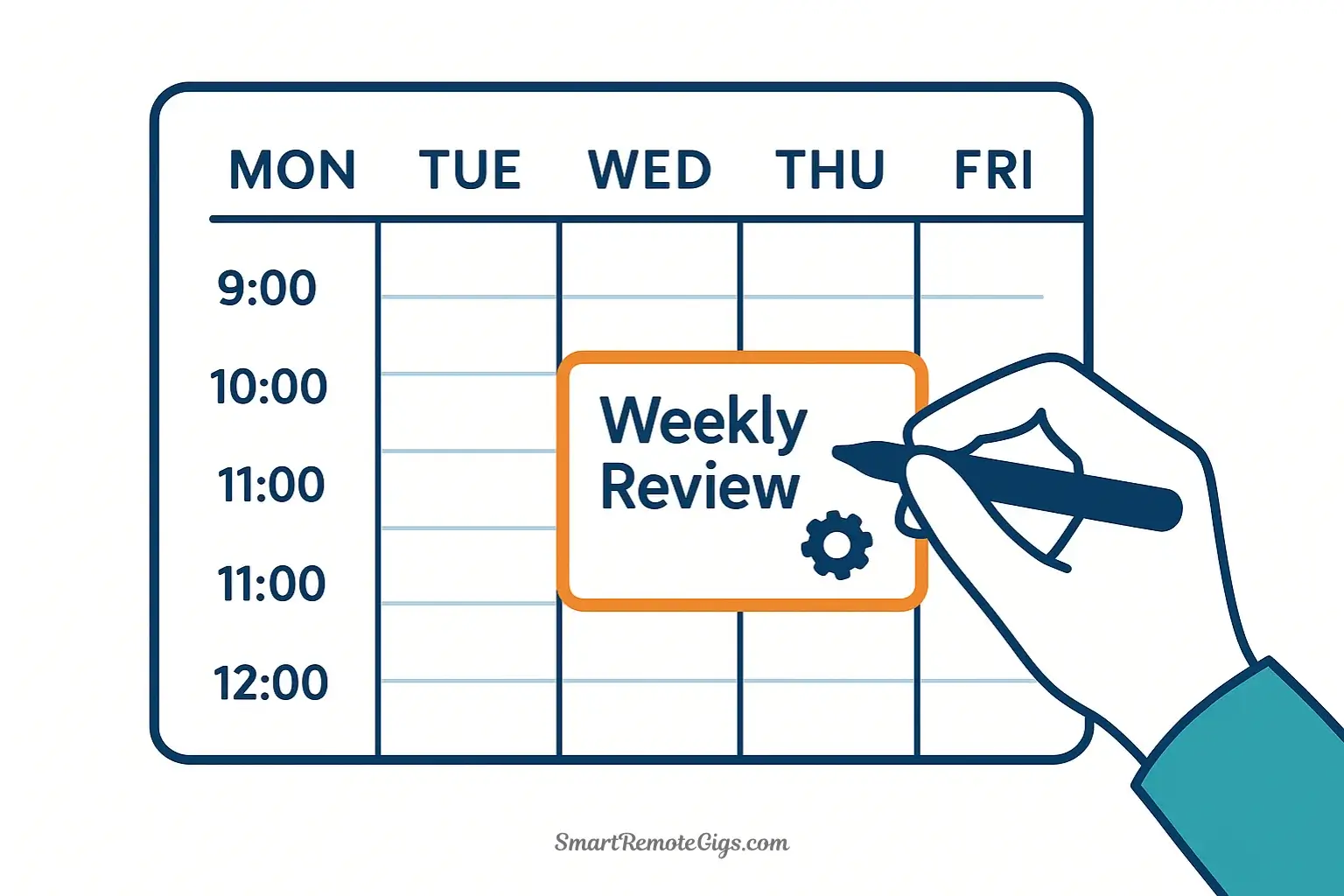
The solution: The Weekly Review—the single most important habit for long-term success.
Do this right now:
- Open your calendar
- Block 30 minutes every Friday afternoon (or Monday morning, or Sunday evening—pick what works)
- Make it recurring
- Treat it as seriously as a meeting with your boss
Your Weekly Review Checklist (30 minutes total):
Part 1: Process Inbox (10 minutes)
- Review everything captured this week
- Apply P.A.R.A.: move notes to Projects, Areas, or Resources
- Delete junk captures
- Goal: Zero inbox items
Part 2: Review Active Projects (10 minutes)
- Open each project folder
- Any completed? Move to Archives
- Any stalled? Decide: push forward or archive
- Any need immediate action this week? Note it
- Goal: Know the status of every active project
Part 3: Quick System Maintenance (10 minutes)
- Any new tags that only appear once? Delete them
- Any notes in wrong folders? Fix quickly
- Any completed tasks to check off?
- Celebrate wins from the week
- Goal: System reflects current reality
Why this works: Consistency beats perfection. A 30-minute weekly investment prevents the chaos from ever returning. Miss one week and you’re fine. Miss four weeks and you’re back in the mess.
Calendar blocking tip: Set a recurring reminder 5 minutes before your Weekly Review with the message “Your Second Brain maintenance time—protecting your sanity for 30 minutes.”
Step 5: Shift Your Focus from Capturing to Expressing
Time required: Ongoing mindset shift
The problem: You’re addicted to capture. Every interesting article gets saved. Every idea gets logged. You feel productive, but you’re really just hoarding. The C.O.D.E. method is stuck at “C” and “O”—you never Distill or Express.
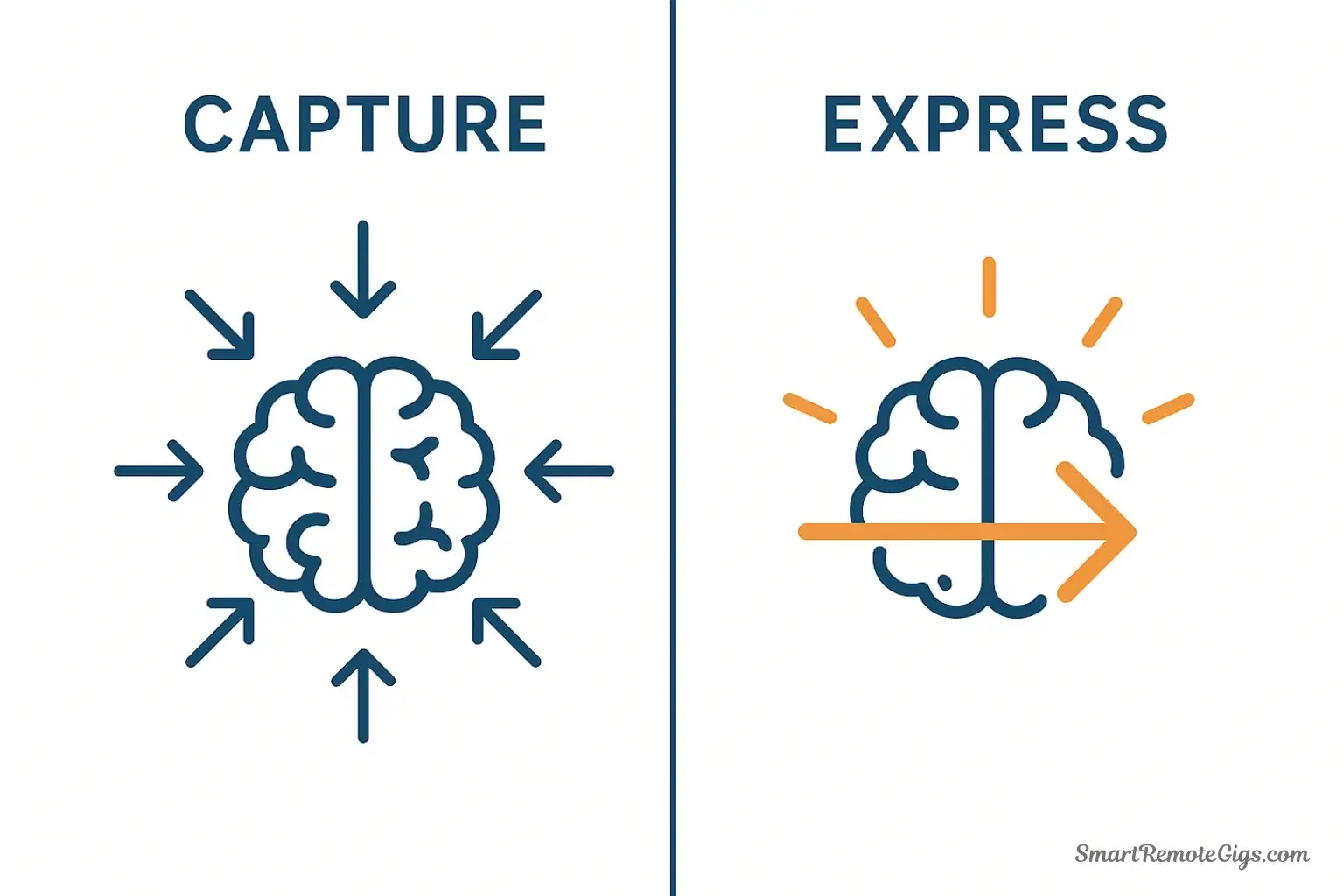
The solution: A one-week Express challenge.
Your challenge:
- For the next 7 days, capture nothing new to Resources
- Instead, open existing notes and use them to create something
What to create (pick one):
- Write a blog post or article using 5+ notes from your Resources
- Create a presentation pulling from your collected insights
- Draft a strategy document synthesizing your research
- Share a thoughtful summary with your team
- Teach someone a concept using your notes as reference
- Make a decision using the information you’ve collected
The point: You already have enough captured information. What’s missing isn’t more input—it’s output. Expressing is where your Second Brain’s value lives.
After the week: Notice how much more valuable your system feels when you’re using it instead of filling it. A smaller, actively used system beats a massive, never-referenced archive.
The mindset shift: Your Second Brain isn’t a museum for interesting information. It’s a factory for producing creative work. Treat it accordingly.
3 Habits to Keep Your Second Brain Clean for Good
The reset is step one. Staying clean requires three simple ongoing habits that prevent future chaos.
Habit 1: The 2-Minute Rule
The principle: If organizing a note takes less than 2 minutes, do it immediately. Don’t add it to your inbox for “later.”
In practice:
- Captured a quick idea? → Immediately file it in the right P.A.R.A. folder (30 seconds)
- Clipped an article? → Add it to the relevant project or resource folder right now (1 minute)
- Had a meeting? → Link the meeting notes to the project before moving on (1 minute)
Why it works: Small decisions compound. Processing 10 items weekly (10 × 2 minutes = 20 minutes) is easier than processing 50 items monthly (50 × 2 minutes = 100 minutes, but with added context-switching overhead).
The mental shift: Your inbox becomes a temporary holding pen for items that require more than 2 minutes of thought, not the default destination for everything.
Habit 2: The “Just-in-Time” Organization Principle
The principle: Don’t organize information until you need it. Rough filing is enough; perfect filing is procrastination.
In practice:
- Capture → Quick file to approximate location → Move on
- When you actually use the note (during a project), then refine its location and distill its content
- Most notes you’ll never use again—don’t waste time perfectly organizing them
Example:
- You clip an article about “Email Marketing Best Practices”
- Quick file:
Resources → Marketing(good enough for now) - Three months later, you start an email campaign project
- Now you open that article, distill the key points, and link it to your project
- That’s when you invest time in refinement—when it has immediate value
Why it works: You organize based on real usage patterns, not imagined perfect taxonomy. You spend time on things that matter, not things that might matter.
Habit 3: The “One In, One Out” Review
The principle: When you add something significant to your system, archive or delete something old.
In practice:
- Added a new project? → Check if any old projects should be archived
- Started learning a new topic (new Resource folder)? → Archive a topic you’re no longer pursuing
- Created a new tag? → Delete a tag you haven’t used in 3 months
Why it works: This prevents infinite accumulation. Your system stays roughly the same size—lean, relevant, and reflective of your current life. Growth is fine, but uncontrolled growth is clutter.
The monthly check: Once a month, count your active Projects. If the number is growing month-over-month, you’re adding faster than completing. That’s unsustainable—time for another audit.
Your Second Brain Is a Tool, Not a Museum
Here’s what you need to hear: a perfect Second Brain doesn’t exist. Even Tiago Forte’s system gets messy. Even productivity YouTubers have unprocessed inboxes sometimes. The difference isn’t perfection—it’s having a maintenance plan.
Your Second Brain is a working tool, not a pristine display. Think of it like a kitchen: it gets messy from use, you clean it regularly, and that’s healthy. A kitchen that’s always perfectly clean is a kitchen nobody cooks in.
Sometimes, a messy system is also a sign of a tool mismatch. If you feel like you’re constantly fighting your current app’s limitations, it might be time to explore other options. Our definitive guide to the Best Note-Taking Apps of 2025 can help you find a tool that aligns better with your natural workflow.
The goal isn’t:
- ❌ Every note perfectly tagged and cross-referenced
- ❌ Zero inbox items at all times
- ❌ A system that looks Instagram-worthy
- ❌ Capturing and organizing 100% of everything you encounter
The goal is:
- ✅ Finding information when you need it (within 2 minutes)
- ✅ Using your collected knowledge to create things (Express regularly)
- ✅ Weekly maintenance that keeps chaos manageable
- ✅ A system that reduces stress instead of creating it
If your Second Brain helps you ship projects faster, make better decisions, or remember important things, it’s working—even if it’s not perfectly organized.
Start Your Reset Right Now
You don’t need to do all five steps today. Start with the one that will give you the most immediate relief:
Feeling overwhelmed by your inbox? → Do Step 1 (Inbox Bankruptcy) right now. Five minutes. You’ll feel 10 pounds lighter.
Uncertain what you’re even working on? → Do Step 2 (P.A.R.A. Audit) this weekend. In 45 minutes, your system will reflect reality again.
Drowning in tags? → Do Step 3 (Simplify Tags) this afternoon. Twenty minutes to clarity.
System getting messy repeatedly? → Do Step 4 (Schedule Weekly Review) right now. Pull up your calendar and block the time.
Collecting but never creating? → Start Step 5 (Express Challenge) today. Open one note and use it to create something small.
The reset doesn’t have to be perfect. It just has to be started.
A functional, slightly messy system you actually use beats a perfect system you avoid. You built your Second Brain to make your life better, not to become another source of anxiety.
So take a deep breath. Pick one step. And fix what’s fixable.
Your Second Brain is salvageable. And more importantly—it’s worth saving.
For more on maintaining an effective knowledge system, explore our guides to the P.A.R.A. method, the C.O.D.E. workflow, or return to our complete Second Brain guide for foundational principles.
